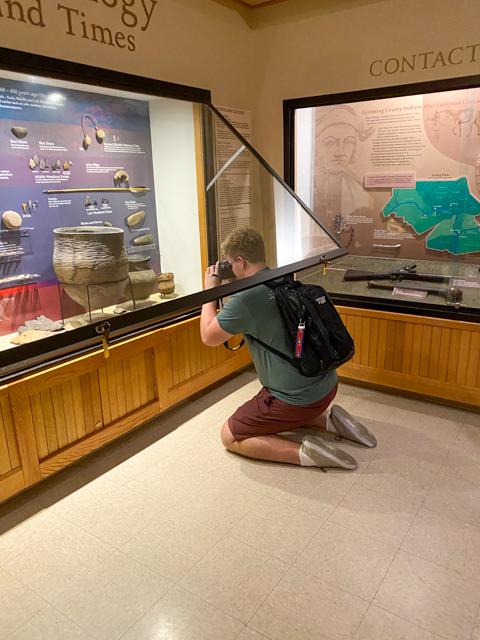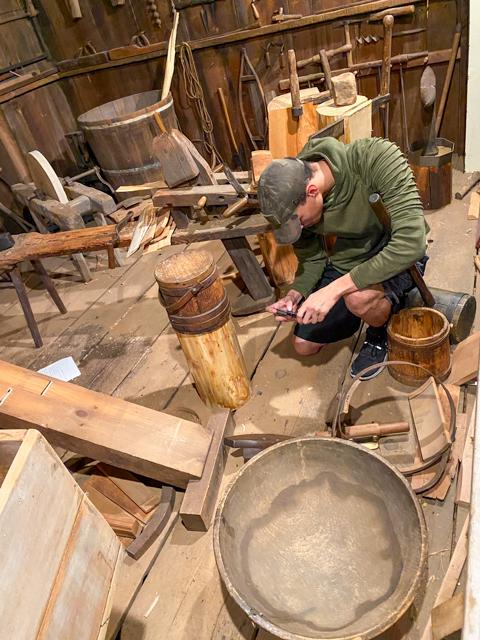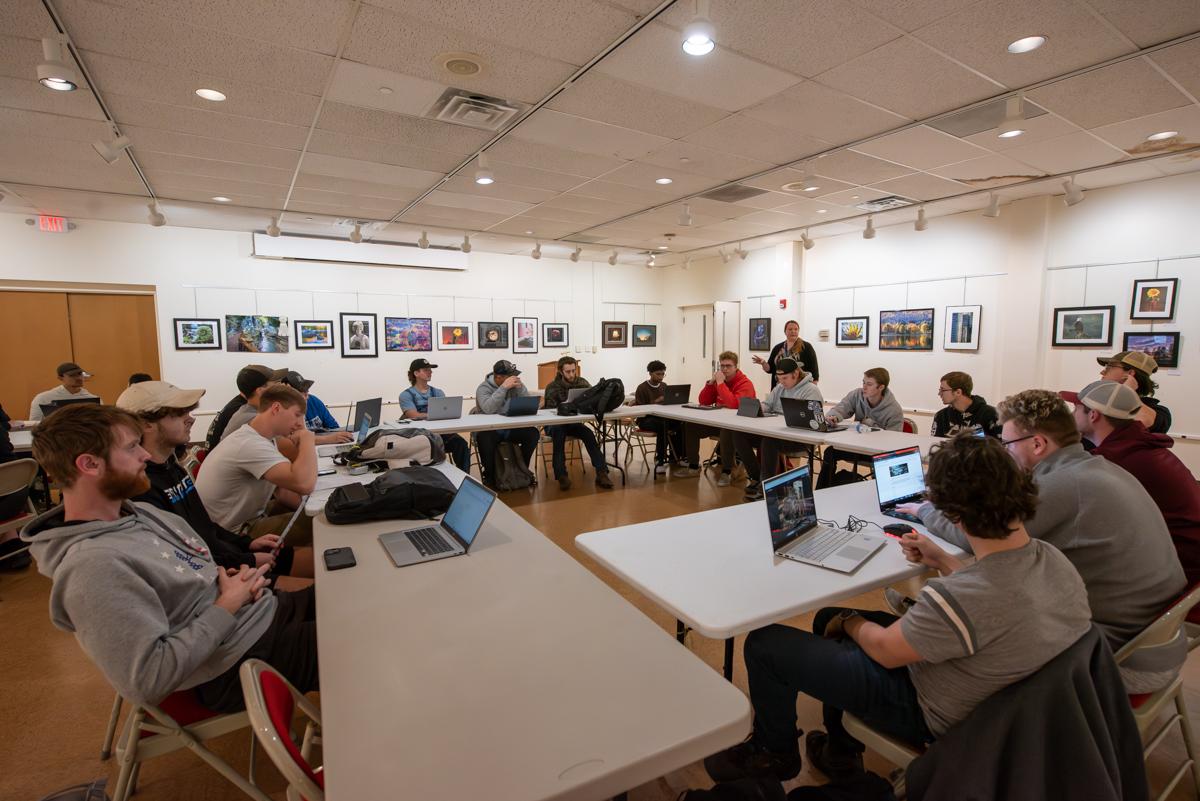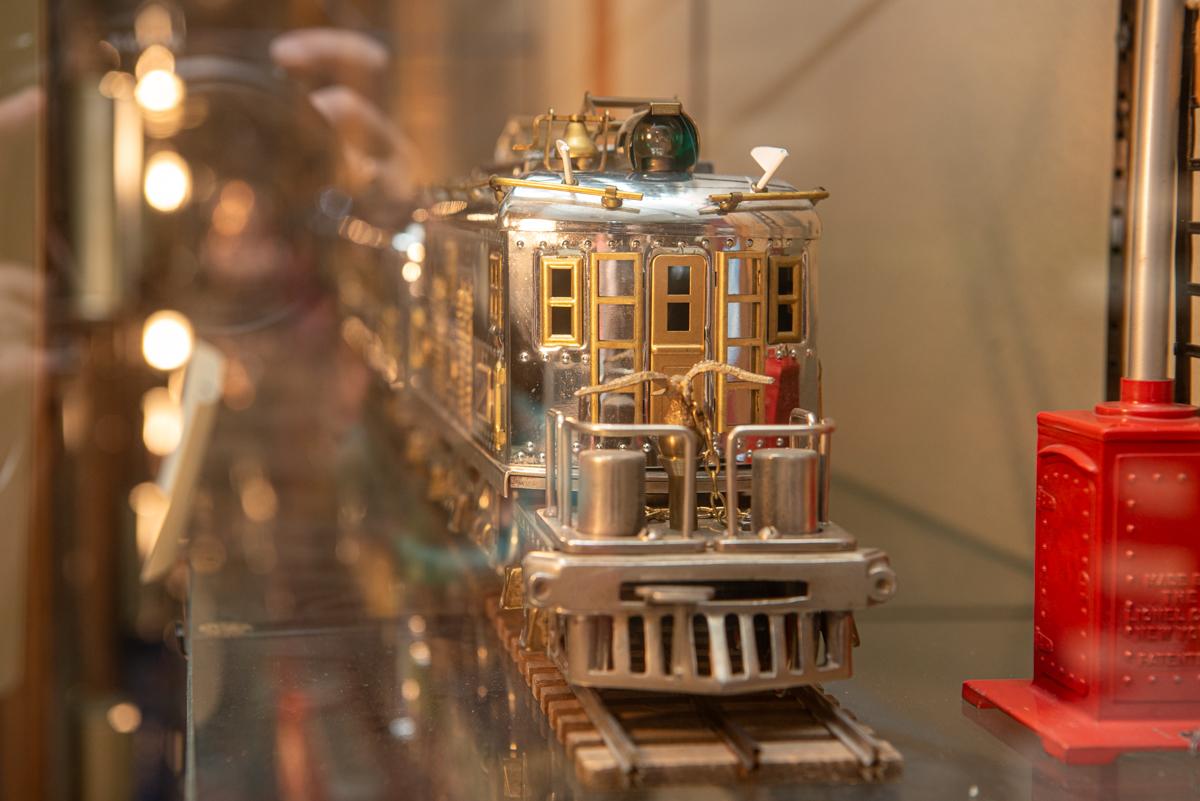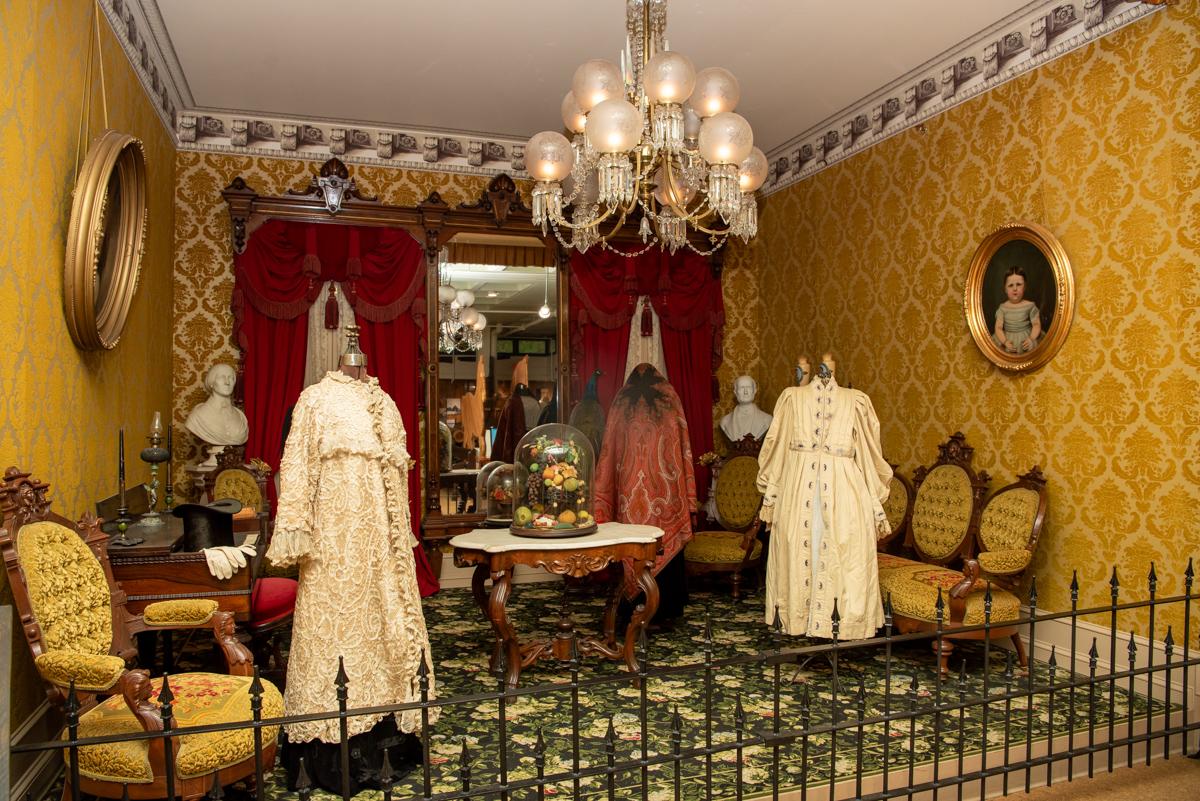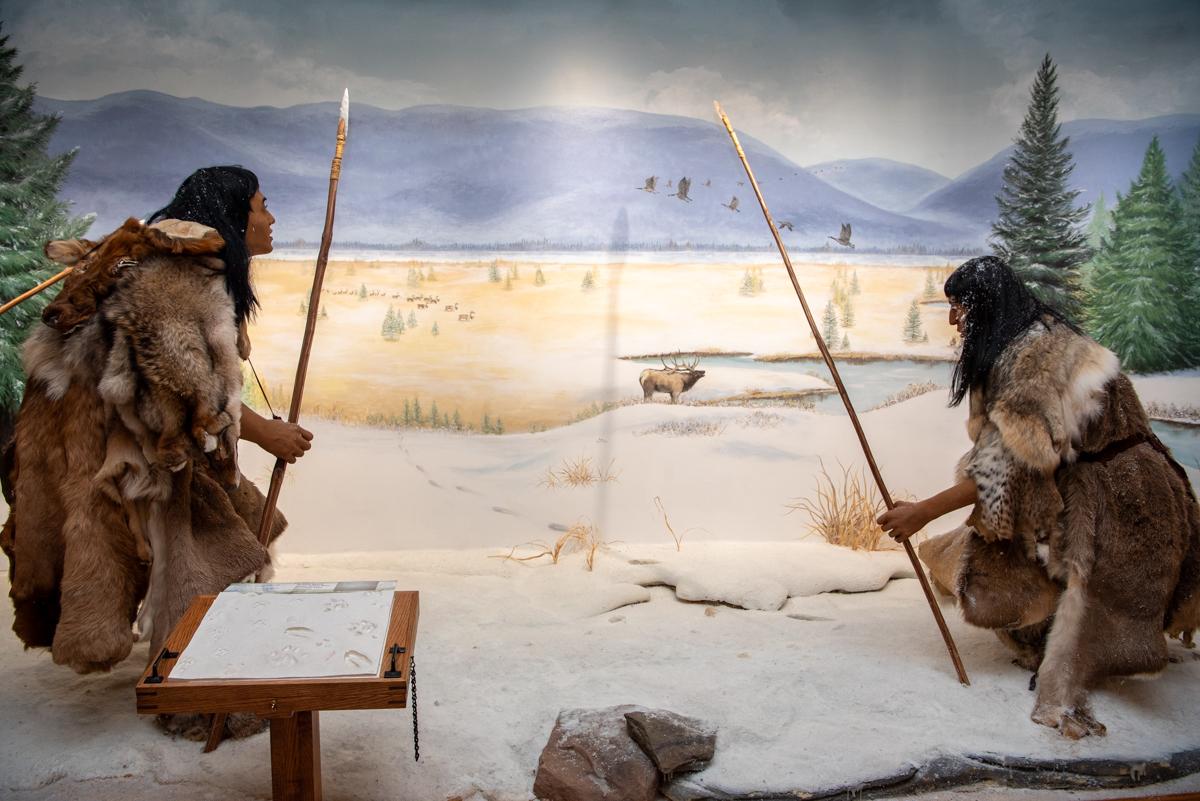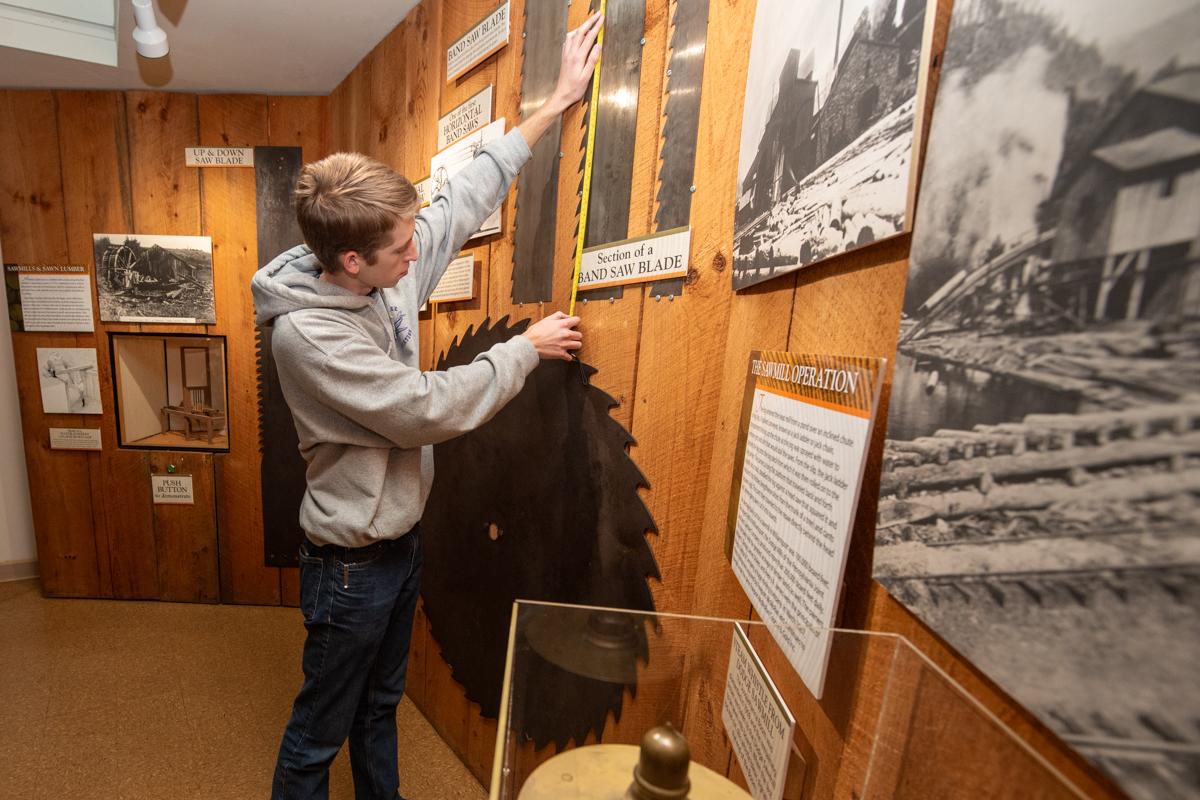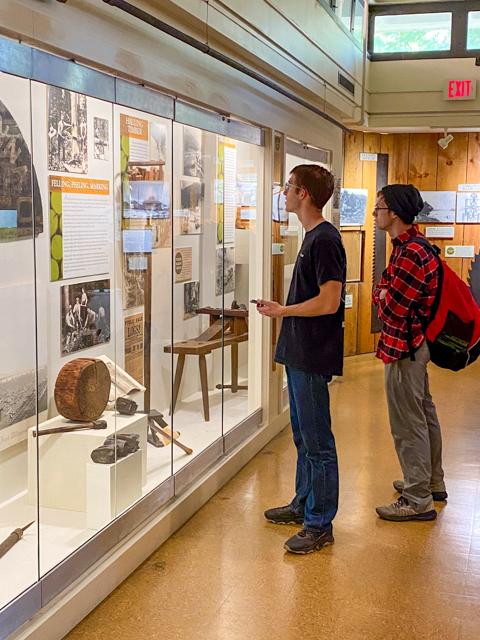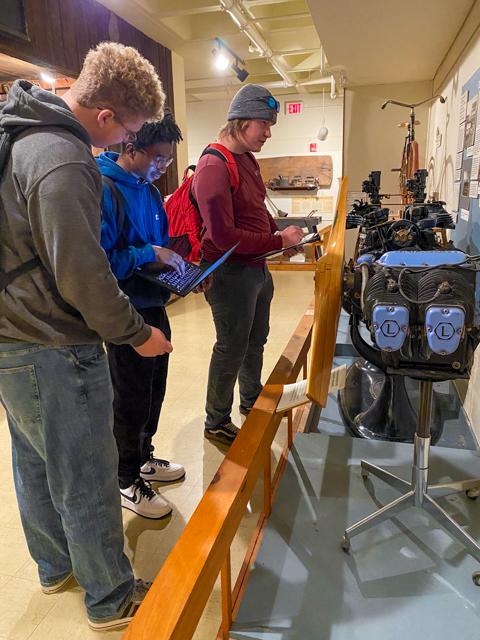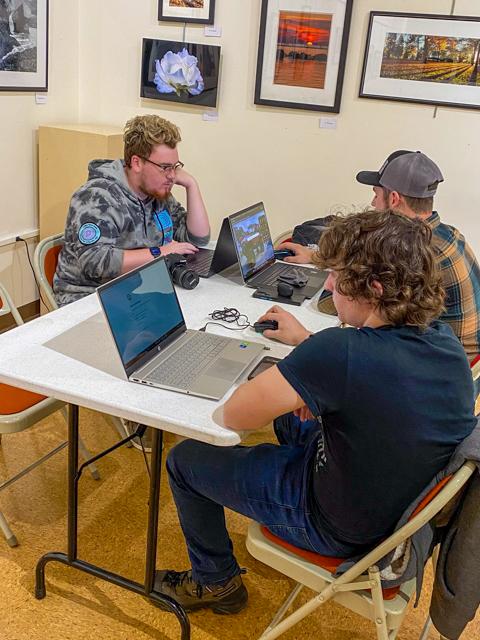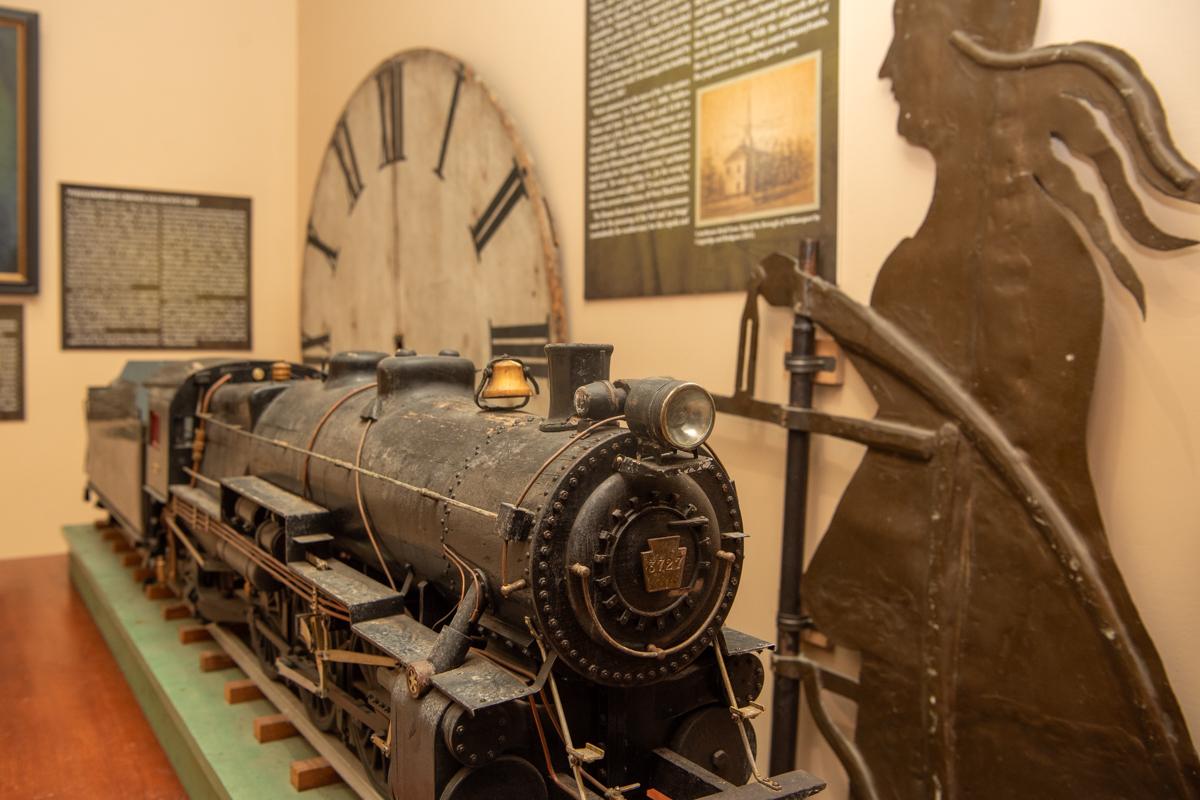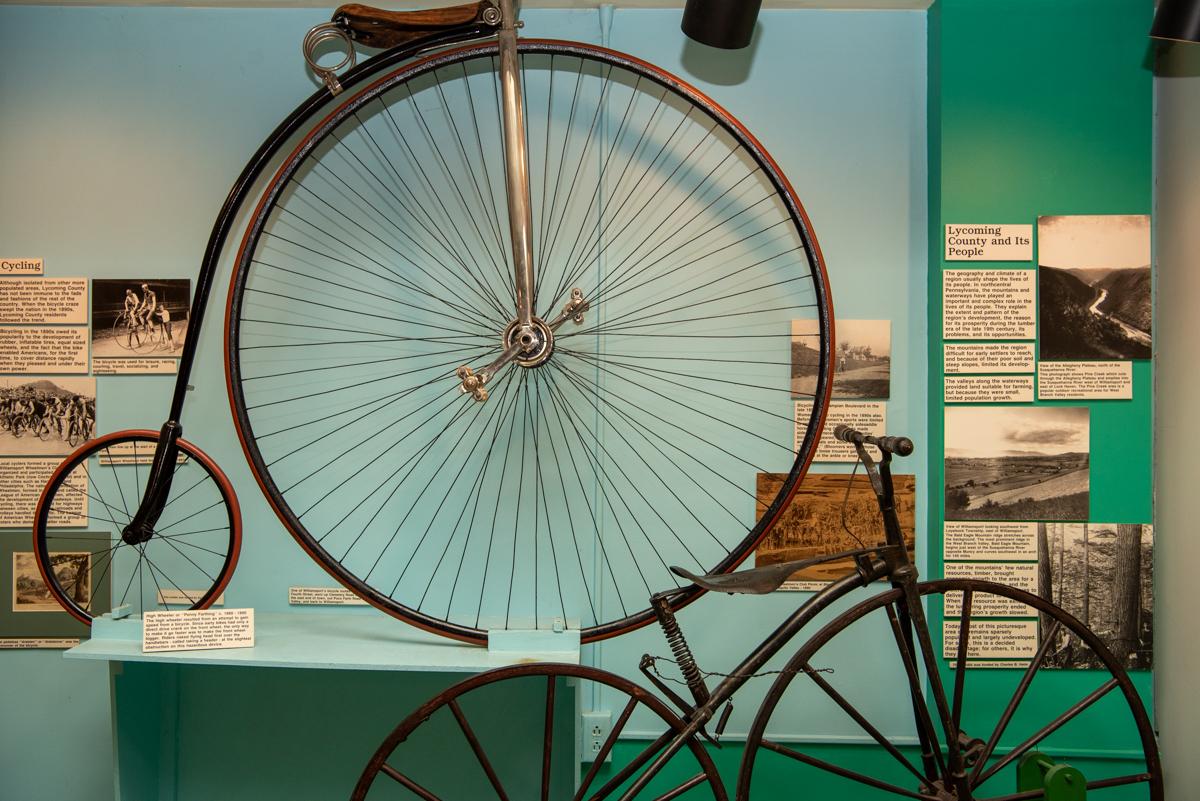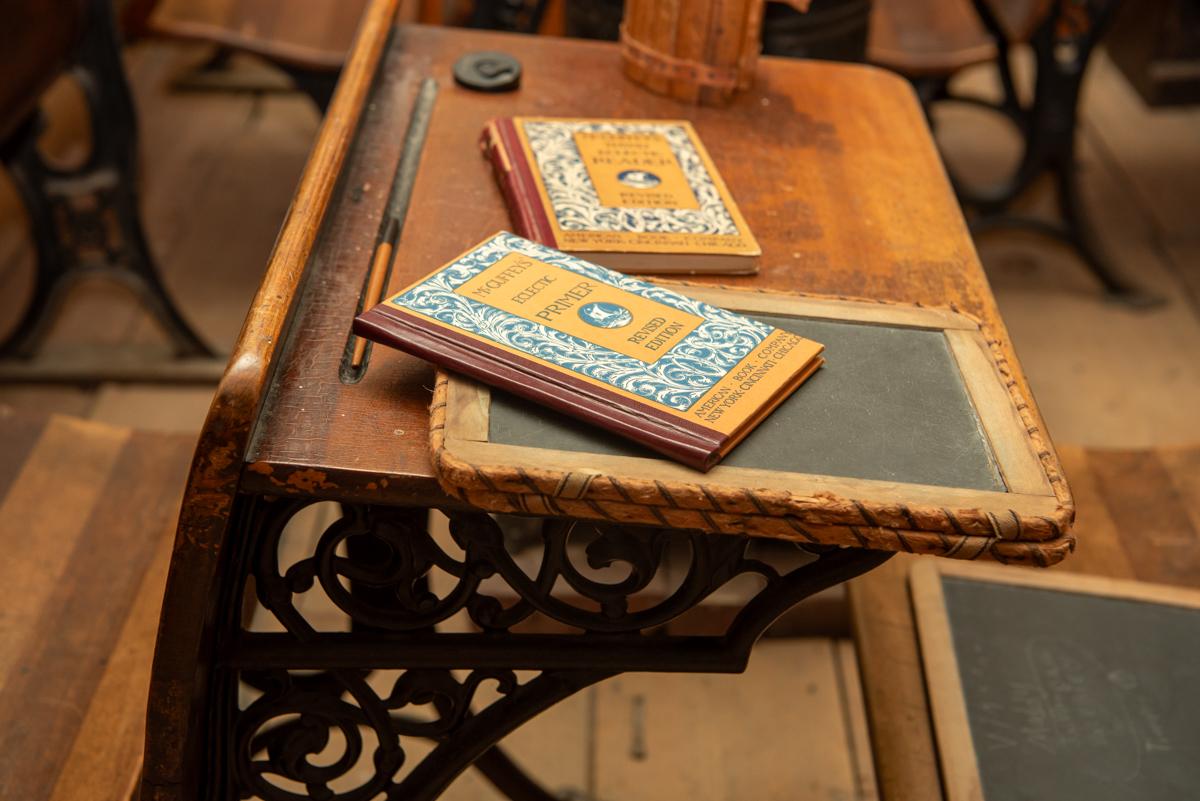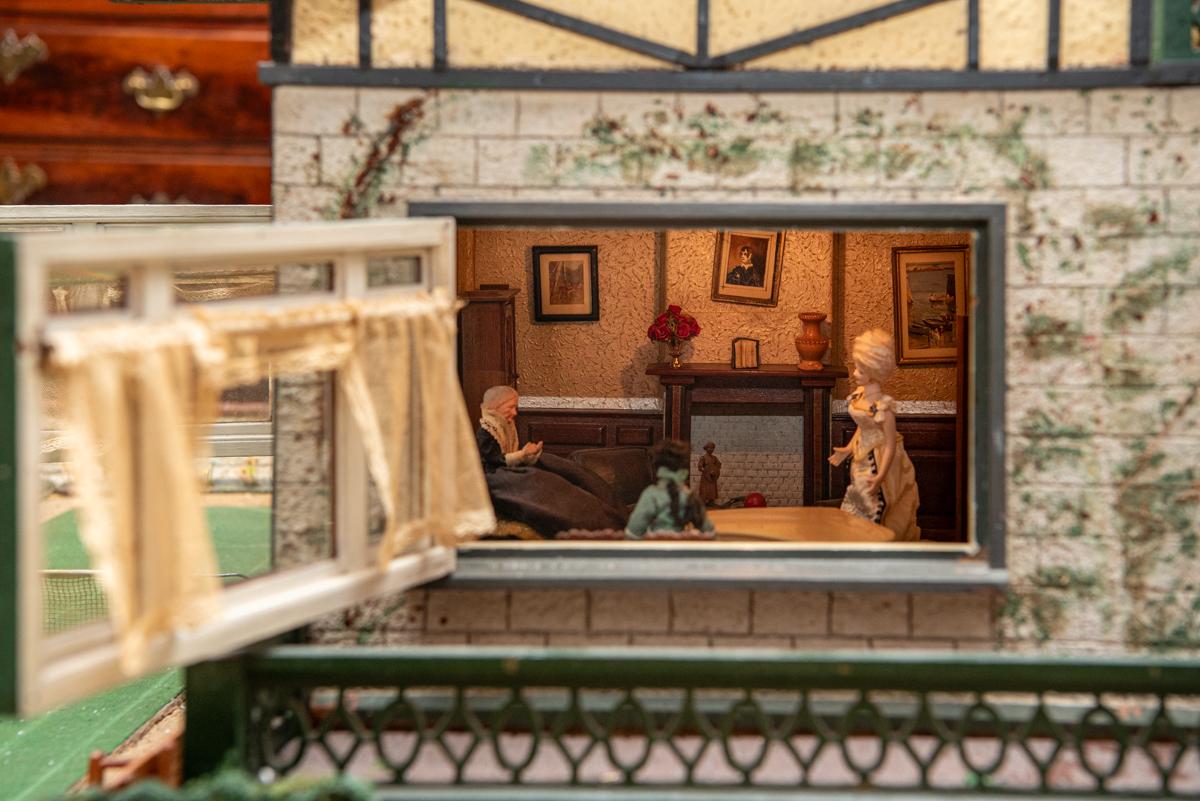Penn College students help historical museum launch new app
Published 04.25.2024
Photos by Cindy D. Meixel, writer/editor-Penn College News, and Andrea M. Campbell, assistant professor of English composition and technical communication

Blending history and modernity, a class of Pennsylvania College of Technology students has pitched in to assist a local historical museum in launching its new digital app that gives visitors an innovative way to engage with exhibits and essentially opens the museum doors for online exploration by anyone across the globe.
The Thomas T. Taber Museum of the Lycoming County Historical Society, located near Penn College’s main campus, recently introduced its digital guide on Bloomberg Connects, a free arts and cultural app created by Bloomberg Philanthropies. The app makes the museum accessible for either on-site or off-site visits through photo, audio and video formats.
Twenty-four students in a Technical and Professional Communication (ENL 201) class taught by Andrea M. Campbell, assistant professor of English composition and technical communication, performed research, asset gathering and inventory management to aid the museum in its quest to lift its artifacts into the online format.
The students’ majors varied widely and included automotive, aviation, construction, culinary, diesel, electronics, information technology, manufacturing and welding disciplines. What they all have in common is a need to gain hands-on exposure to inventory management systems and professional communications to assist them in their future careers.
“When teaching Technical and Professional Communication, it is critical to get students exposed to a variety of platforms and situations that mirror their professional goals,” Campbell explained. “With the Bloomberg Connects CMS (content management system), students were able to work on a platform that is similar to many inventory management systems and the increasingly popular CRM (customer relationship management) software programs now used in over 91% of businesses across all industries.
“This allowed students to gain hands-on experience in professional composition and data recording through digital software programs that will complement any degree path here at the college,” she continued.
Working in groups of three to record, measure, research and document artifacts, many students found items and information related to their professional fields or personal interests.
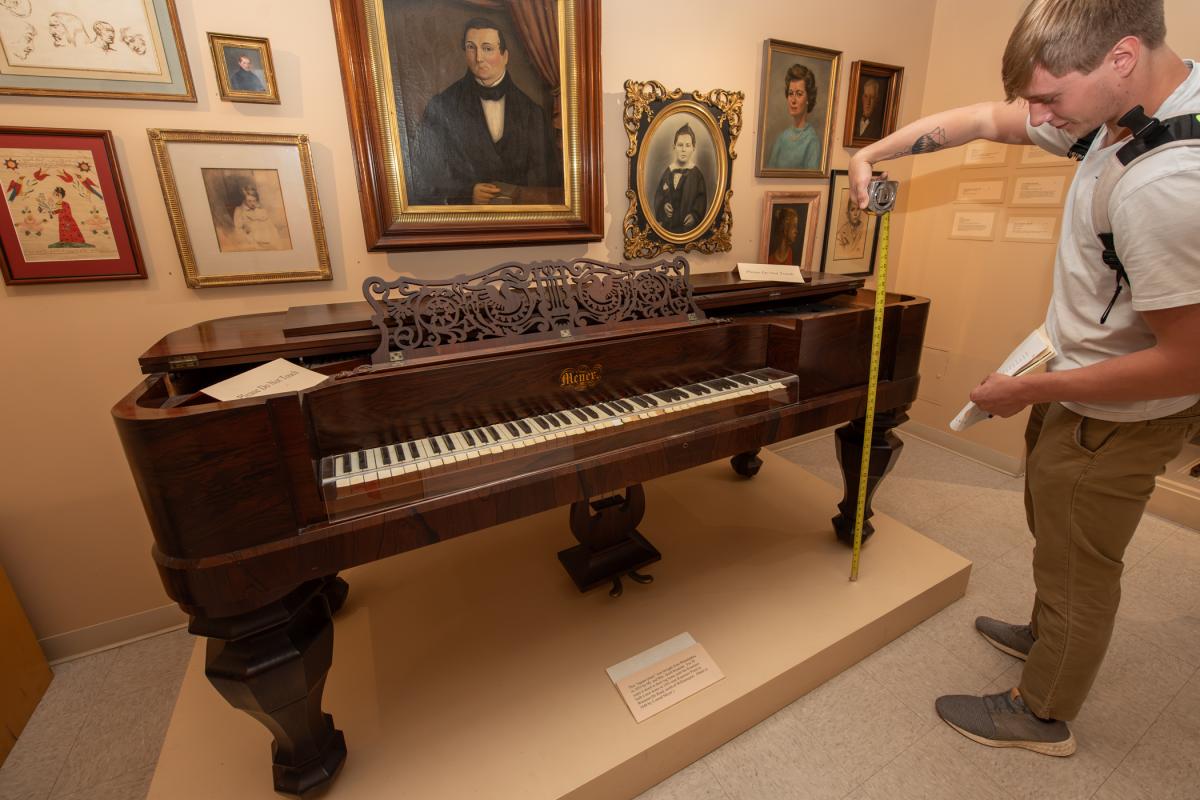
Robert L. Miller, a mechatronics student from Pittston, appreciated the Taber Museum’s World War I and II exhibits due to his grandfathers’ extensive military experiences from the ’40s through the ’60s that included his paternal grandfather’s WWII combat.
“I thought the historical museum was amazing with all the info and artifacts they have there. It’s one thing to hear stories and read about the wars in history books or from my grandfather, but it’s also something of wonder to see articles and artifacts from those times,” Miller shared. “It gives you the ability to not just see what these items look like but to understand and imagine having to use some of the items they have on display.”
Nate M. Buettner, of Cranberry Township, majoring in welding & fabrication engineering technology, was fascinated by the museum’s blacksmithing displays and decided to focus his work in that area.
“I chose blacksmithing because it was one of the earliest forms of metal manipulation, and being in the welding program, I wanted to learn more about it,” Buettner explained. “Some people consider blacksmithing to be the first form of welding due to joining two pieces of metal together while being able to keep its mechanical properties. The joining of metal is considered forge welding and is somewhat still used to join different metals. For example, trying to weld aluminum to steel is nearly impossible unless you’re using forge welding, brazing or advanced processes that only came out in the last 10 to 20 years. Learning more about where my field of study came from was an interesting perspective to gain.”
Campbell said, “It was amazing to see the students’ natural leadership skills and trade mastery on display as they worked together to navigate content.”
The educator was also pleased to witness the depth of student engagement with the museum’s exhibits.
“It was wonderful to see the students tackle this project with curiosity and enthusiasm,” she shared. “Some of my students were so curious about the history of their artifacts that they continued to ask questions and research well beyond what was needed to record the artifacts.”
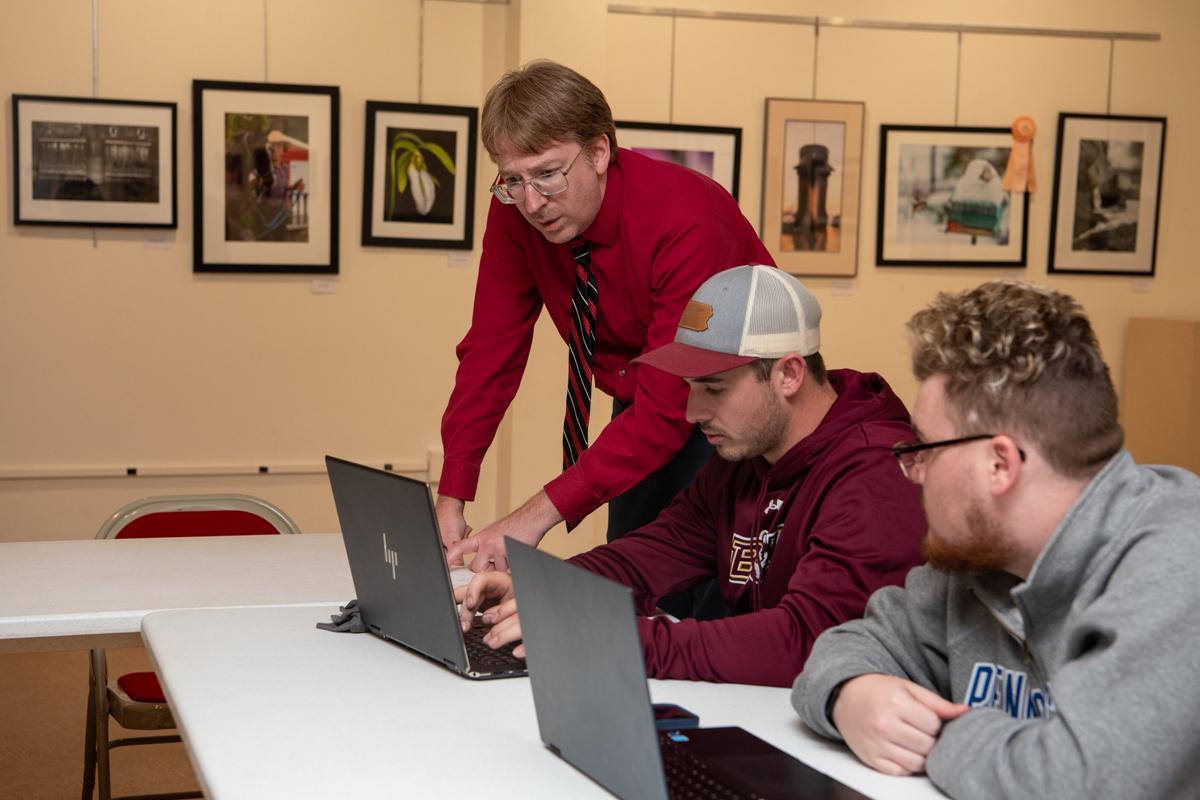
Scott Sagar, the museum’s curator of collections, said, “The Taber Museum was pleased to coordinate with Andrea and her students on this project. It was interesting to see which exhibits the students gravitated toward when looking for items to research. We hope that featuring our museum on the app will lead to increased interest and visitation and will enhance the visitors’ experience as they move through the exhibits.”
Campbell, who has served on the museum board and is a member of Northcentral Chapter 8 of the Society of Pennsylvania Archaeology, says the historical museum “is a cultural gem located right off campus.”
“Not only does it capture stories of people, places, events and industries throughout Lycoming County history and memorialize them for future generations to see through its exhibits, but it also offers educational programs, community events and programs,” she said. “The staff works incredibly hard to provide for the community, so when an opportunity arose to both support the museum and enrich our students’ learning experience in a way that complements their professional paths – I jumped on it.”
The Bloomberg Connects app is currently used by only six other Pennsylvania museums (three in Pittsburgh and three in the Philadelphia area), making the Williamsport debut the only one outside the major two cities. The app is being utilized by more than 300 cultural institutions around the world.
The platform is part of Bloomberg Philanthropies’ longstanding commitment to supporting digital innovation in the arts. Bloomberg Connects makes it easy to access and engage with arts and culture from mobile devices.
Campbell says the Taber Museum became aware of the app when its board vice president, Mary Holstein, used it at the Museum of Modern Art in New York City and proposed exploring its potential.

At the start of the project, a Bloomberg employee connected with the Penn College classroom via Zoom to provide a live training session. After a month of content gathering at the museum, the students’ write-ups went through an editing process to ensure consistency with the style guide before being added for the digital tour experience.
For the students, the process was challenging, informative and rewarding.
“When I came to the CMS app that we were assigned to work on, I was a little worried at first since we haven’t done something like this before, but we were able to work in groups and had an amazing teacher and curator to help us along the way,” Miller shared. “While it took some time to gather the info on all of the items we did, I can say without a doubt that I really enjoyed the assignment. It was fun reading and doing research on the items.”
Buettner added, “It was nice to develop the museum app. It felt good to help out the community while getting real-life experience and volunteer hours.”
Technical and Professional Communication provides an intensive survey of technical writing, with practice in preparing reports, instructions, memos and other communications for business and industry. The course develops students’ skills in analyzing audiences and writing for readers with and without technical expertise.
“Overall, this was an amazing experience,” Campbell said. “I am so thankful that the Taber Museum allowed this opportunity for our students.”
Information on the Taber Museum and its Bloomberg Connects app is available by calling the museum at 570-326-3326.
To learn more about Penn College’s general education classes, including communication courses, contact the School of Business, Arts & Sciences at 570-327-4521.
For more about Penn College, a national leader in applied technology education, email the Admissions Office or call toll-free at 800-367-9222.
